
A History of Heraldry, Family Coat of Arms and Family Crests
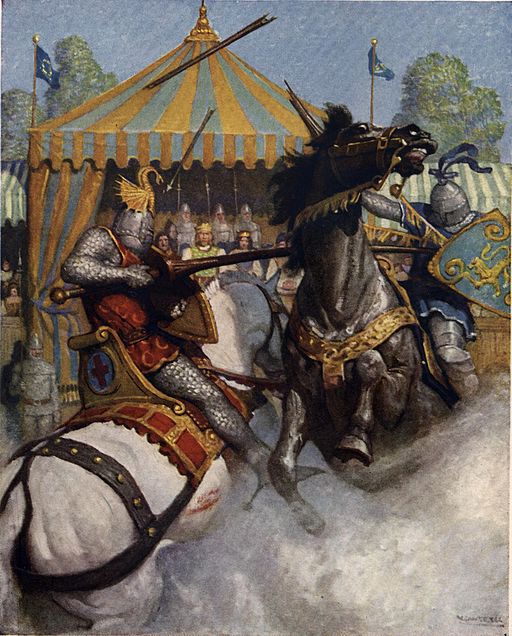
In our quest for origins, we focus on a litany of records to link our present family to our ancestral roots. One such record, or identifier rests in mysterious family coat of arms. From my paternal grandmother’s diligent genealogical research she documented from connections to previous generations, two family coats of arms, that of the Greenlee (paternal name) and Shaw (paternal grandmother’s maternal name) families and, I’ll explore each of these in detail as my research continues, while reviewing additional unsubstantiated coats of arms I have found related to my other family lines. For now, I wanted to present a brief history of coats of arms and heraldry to put this identifier into perspective.
Precursors to heraldry as we know it, go back to at least the Bronze Age with the use of field signs (differencing marks in clothing) to distinguish armies in battle. The Ancient Greek city states and Roman armies also made use of field signs and distinctive shield markings to help in the visual identification of their armies. After the decline of the Roman Empire, we find evidence of distinct shields with simple geometric ornamentation but, not with figurative emblems within armies in the Bayeux Tapestries which illustrates the Norman invasion and conquest of England in 1066. However, the earliest evidence of heraldic symbolism occurs in the equestrian seal of Enguerrand (Ingelram), count of Saint-Pol (1130s or 1140s AD), that still shows a plain shield, but, with what would later become heraldic charges in the form of sheaves of corn, depicted as an arrangement around the horse.
![Hyghalmen Roll [Public domain]](https://upload.wikimedia.org/wikipedia/commons/1/1b/Hyghalmen_Roll_Late_1400s.jpg)
During the melee of medieval combat in the 11th century, there arose a need for knights and nobles to distinguish themselves from one another on the battlefield, in jousts, and in tournaments. From this need came the heraldry system which allowed armor clad nobles to identify themselves on the battlefield. Each region and kingdom defined the rules, traditions, and customs that dictated the use of heraldry and a coat of arms for their people. And heraldry, closely associated with the culture of chivalry, Latin Christianity, the Crusades, feudal aristocracy and monarchies, developed as a system of visual identification of rank and pedigree during the European High Middle Ages. Later, as the heraldry custom developed throughout Europe, coats of arms became more prevalent. A coat of arms presented a heraldic visual design on either an escutcheon (a shield), surcoat, or tabard, and traditionally represented a heraldic achievement, unique to an individual person, family, state, organization, or corporation and came into general use in the 12th Century in England by King Richard I, during the Third Crusade (1189-1192 AD).
The Encyclopedia Britannica defines Coat of Arms, as follows:
“Coat of arms, the principal part of a system of hereditary symbols dating back to early medieval Europe, used primarily to establish identity in battle. Arms evolved to denote family descent, adoption, alliance, property ownership, and, eventually, profession.” – REF: Encyclopedia Britanica: Coat of Arms
The right to use arms varied between countries and regions, and flourished from the 13th century through the early modern period (16th century). During this time, the use of heraldry transitioned from being limited to nobility to its use by wealthy commoners. Territories would often adopt the coats of arms of noble families after these families became extinct and became prominently used by them in their municipal coats of arms by the 16th century. And finally, with the decline of European families and the introduction of Republicanism in the 19th and 20th centuries, the heraldic traditions were incorporated into modern national flags and national emblems.
French Heraldry
French Heraldry: French Heraldry originates sometime in the 11sth century and follows the use of Tinctures with two types of Tinctures (heraldic colors) and has set system of crown and coronets. The French heraldic system greatly influenced the British and Western European heraldries and much of the terminology and classifications derive from it. With the fall of the French monarchy during the French Revolution, and the French Empire under Napoleon Bonaparte introduced a new system of heraldry which came to an end with Napoleon’s reign when thereafter, heraldic law was no longer enforced. [REF: Wikipedia: French Heraldry]
British Heraldry
British Heraldry: British Heraldry, that of England and Scotland, integrated the use of Tinctures and system of crown and coronets from French Heraldry. The traditions of English and Scottish heraldry consider a coat of arms the legal property of an individual rather than that of a family which family members and their descendants could modify with some difference to signify their relation to the original coat of arms bearer – usually in the form of a color change or the addition of a distinguishing charge. [REF: Wikipedia: British Heraldry]
Irish Heraldry
Irish Heraldry: The acceptance of the idea of sept arms as a distinctive feature of Irish heraldry sets it apart from British heraldry in that the coat of arms defines a division of a family (a sept), not just an individual. The chieftain of a sept was not necessarily a son of the previous chieftain, but, could be any member of the sept whose grandfather had held the position of chieftain. Therefore, a member of the particular sept had the right to display the arms of that sept. [REF: Wikipedia: Irish Heraldry]
German Heraldry
German Heraldry: The German and Holy Roman Empire tradition of heraldry include national, civic arms, noble and burgher arms, ecclesiastical heraldry, and displays and traditions which contrast the heraldry customs of the French, British and Irish heraldries that are more family and clan oriented in nature. The Germanic heraldry tradition strongly influenced the customs of Nordic heraldry. [REF: Wikipedia: German Heraldry]
Spanish Heraldry
Spanish heraldry originates sometime in the 11th century, with designs based on military service and the heritage of their grandparents. Spanish coats of arms allowed the owner to assign their own meaning and symbolism to their design. Unlike their European counterparts, Spanish nobility was based almost exclusively on their military service. [REF: Wikipedia: Spanish Heraldry]
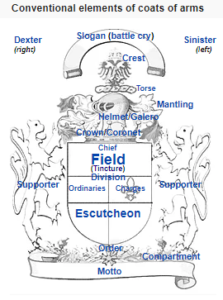
A coat of arms consisted of the following elements: [1] Dexter: Refers to the location on the right of an escutcheon (shield) from the shield bearer’s perspective; [2] Sinister: Refers to the location on the left of an escutcheon (shield) from the shield bearer’s perspective; [3] Slogan (battle cry): A secondary motto appearing above the crest of an escutcheon; [4] Crest: A part of the heraldic display depicting the device worn on top of a helm; [5] Torse: a roll of fabric or wreath at the top of the helmet and at the bottom of the crest. [6] Mantling: the drapery tied to the top of a helmet or above the shield; [7] Helmet/Galero: the helmet situated above the shield; the style of the helmet varies according to rank and social status; [8] Crown/Coronet: an emblem of a sovereign state; [9] Chief Field (Tincture): the background of the shield (field), with the limited palette of colors and patterns of the tincture; [10] Division: a division can divide different tinctures in a field; [11] Ordinaries: an ordinary (or honorable ordinary) is a simple geometrical figure, bounded by straight lines and running from side to side or top to bottom of the shield; [12] Charge: an emblem or device occupying the field of an escutcheon; [13] Escutcheon: a shield that forms the main or focal element in an achievement of arms. [14] Order: An order is a visible honor awarded by a sovereign state, monarch, dynastic royal house or organization to a person, typically in recognition of individual merit, that often comes with distinctive insignia such as collars, medals, badges, and sashes worn by recipients. [15] Compartment: In heraldry, a compartment is a design placed under the shield, usually rocks, a grassy mount (mount vert), or some sort of other landscape upon which the supporters are depicted as standing; [16] Motto: a maxim: a phrase meant to formally summarize the general motivation or intention of an individual, family, social group or organization; [17] Supporters: sometimes referred to as attendants, are figures or objects usually placed on either side of the shield and depicted holding it up.
So, if a family coat of arms served as the equivalent of a family logo if we were to associate it with a modern term, heraldry might be the modern equivalent of a modern corporation’s brand. It’s important to note that during the Middle Ages right up to the 18th century, the economics and culture of the time kept families close to one another and limited the diaspora of a given surname, so a family’s fortunes rose and fell depending on their contribution and perceived value to their king.
__________________________________________________________
Family History
Family Births
- On 1704-04-27, Samuel COLEMAN is born in King and Queen, Virginia, United States
- On 1789-04-27, Frances Garnett TWYMAN is born in Madison County, Virginia
Family Deaths
- On 1579-04-27, Phillip JOHNSON dies in London, Middlesex, England (St Giles, Cripplegate, London, England--Burial)
- On 1591-04-27, Thomas ANSCELL dies in Barford, Bedfordshire, , England
- On 1686-04-27, John FLEMING dies in Charles Parish, York, Virginia, United States
- On 1919-04-27, Harriet Newkirk (Hattie) HALL dies in Greensboro, Guilford, North Carolina
- On 1949-04-27, Henry Shaw TWYMAN dies in place unknown
| Paternal Line | Maternal Line | ||
|---|---|---|---|
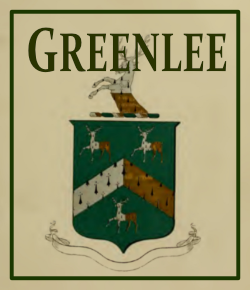 |
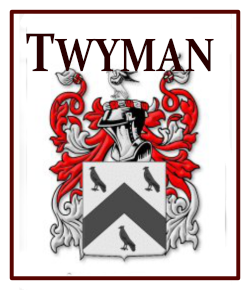 |
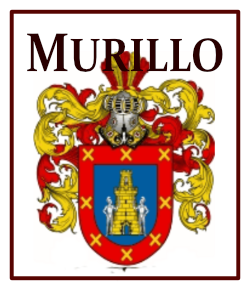 |
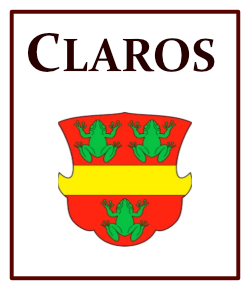 |
Categories
Genealogy
- Genealogy Portal
-
Search genealogical information related to the Greenlee, Murillo, Twyman and Claros families. Please contact us if you think we're related and can help each other in expanding our ancestry trees.
